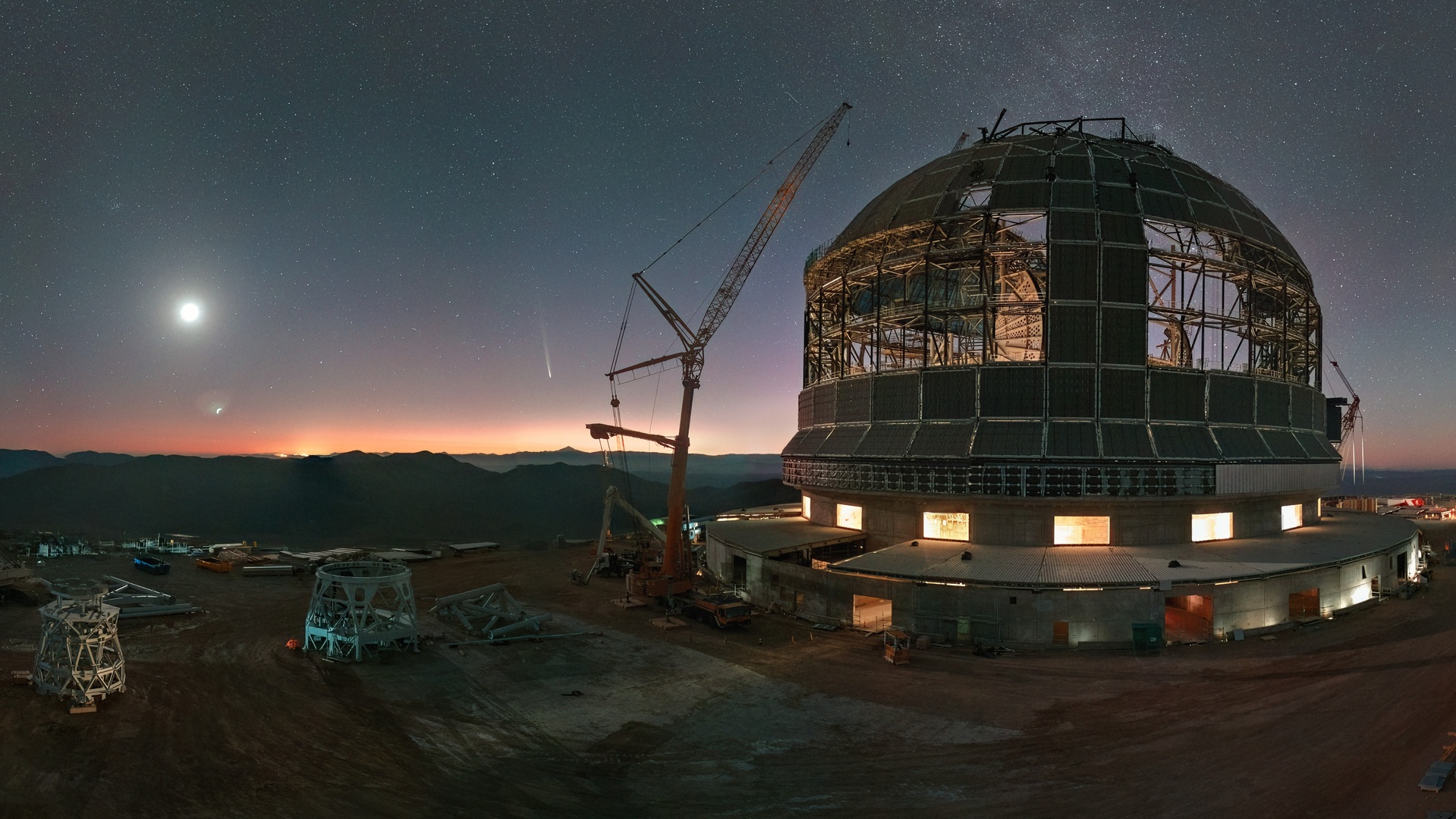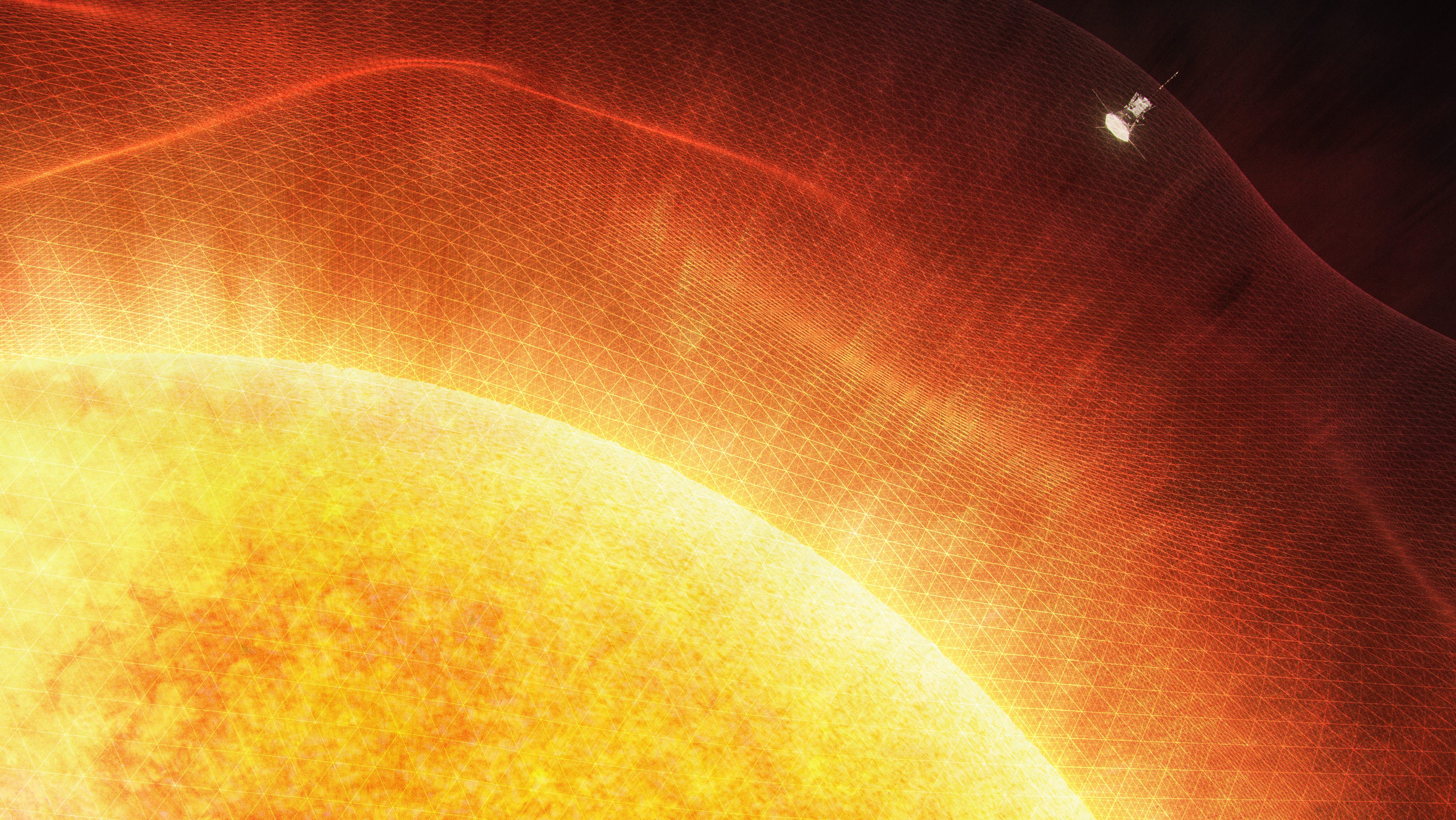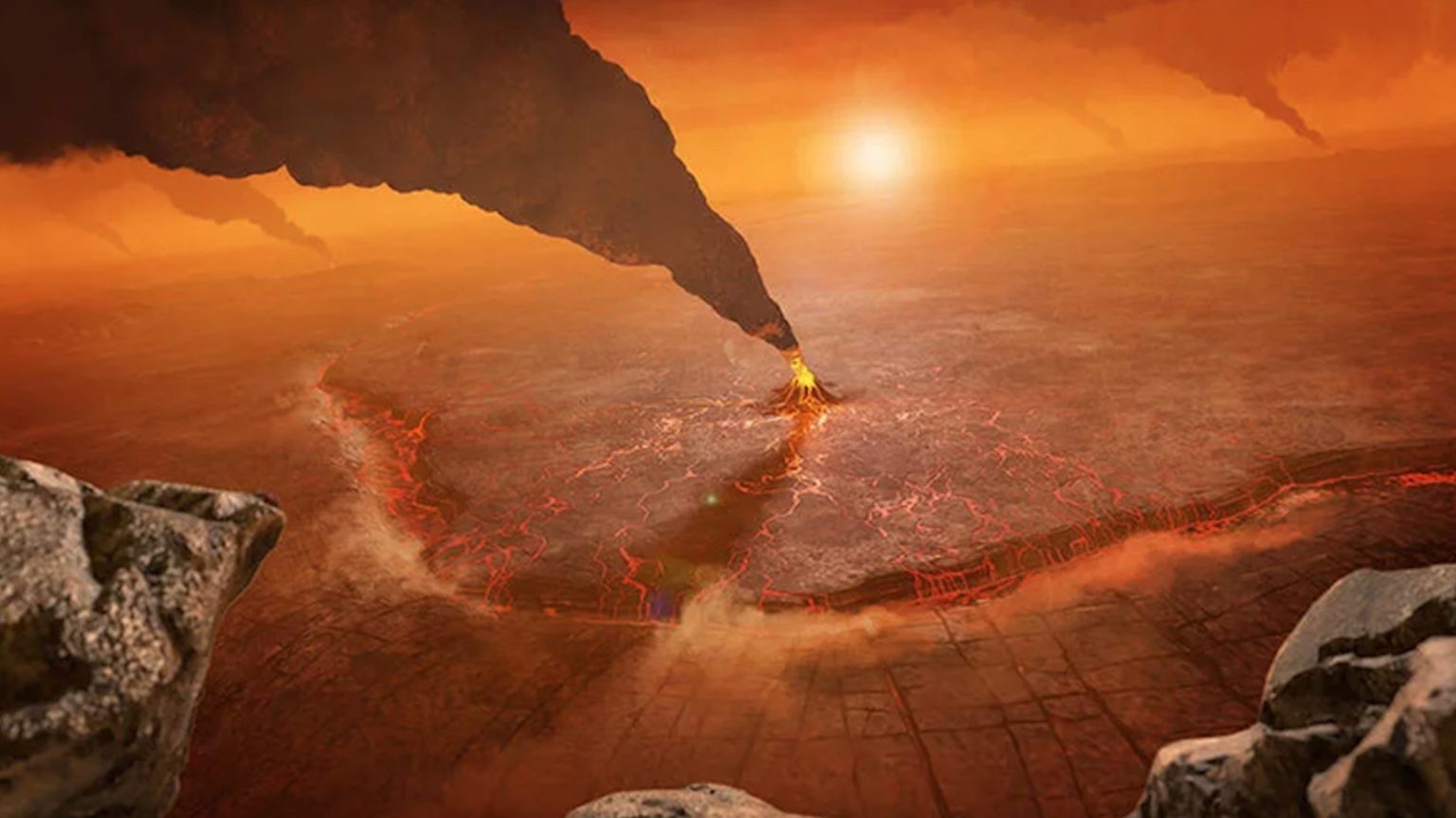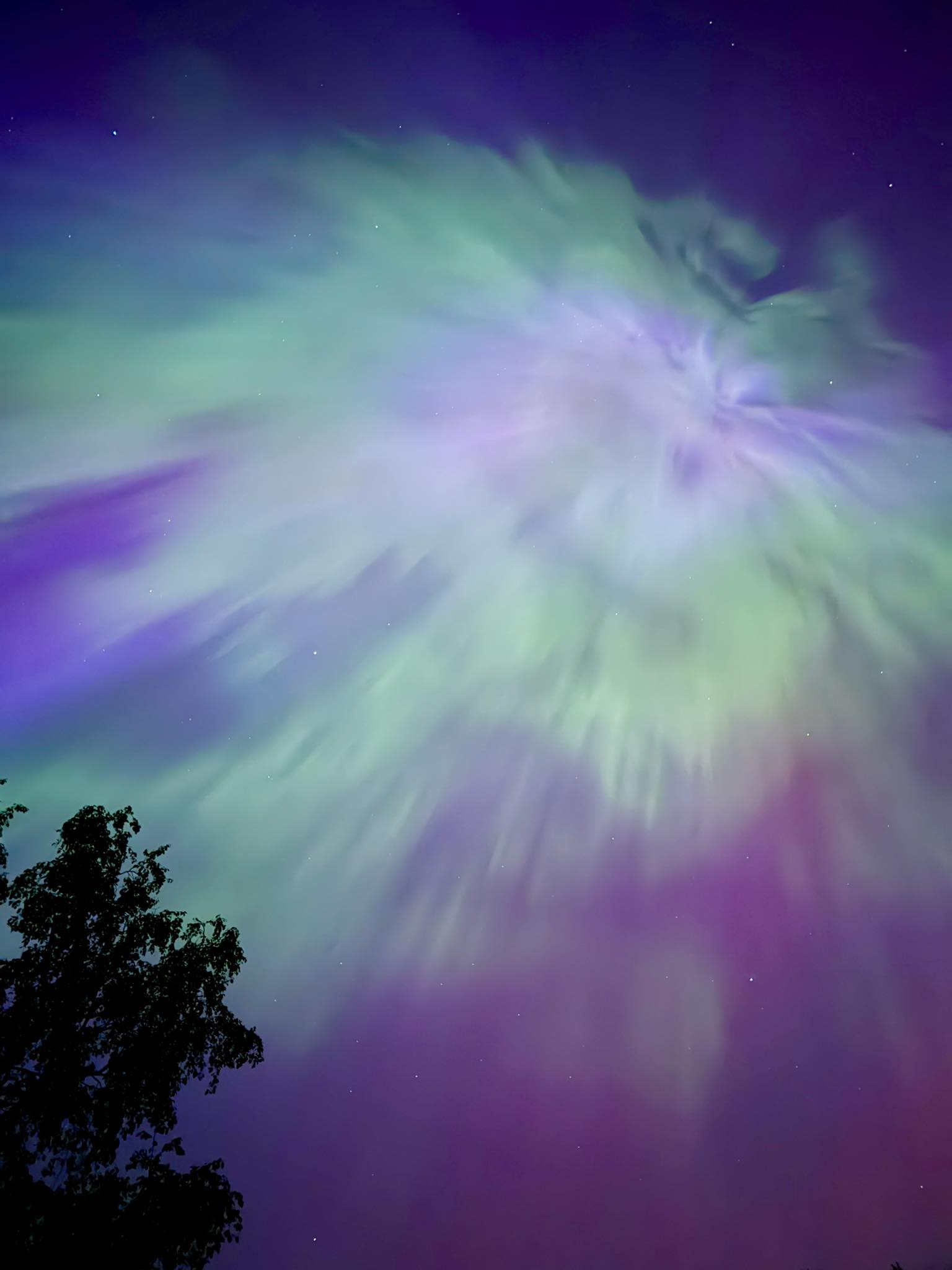What do star trails look like from the ISS?
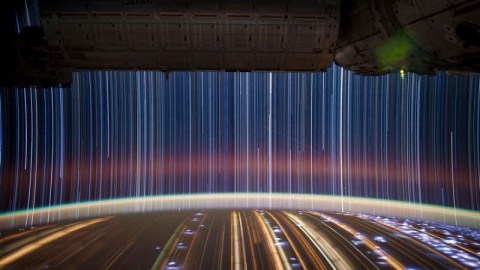
A view that no one ever had — not even from space — until Astronaut Don Pettit changed everything with these stunning photographs.
“This job is a great scientific adventure. But it’s also a great human adventure. Mankind has made giant steps forward. However, what we know is really very, very little compared to what we still have to know.” –Fabiola Gianotti
To photograph star trails from Earth, simply point your camera and let the Earth rotate, leaving the shutter open.
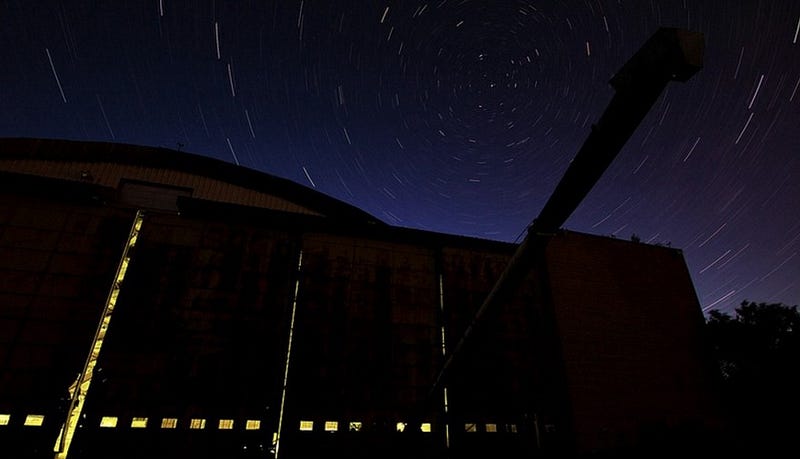
But our 24 hour period is nothing compared to the ISS astronauts, who circle the entire Earth every 90 minutes at some 17,000 mph (27,000 kph).
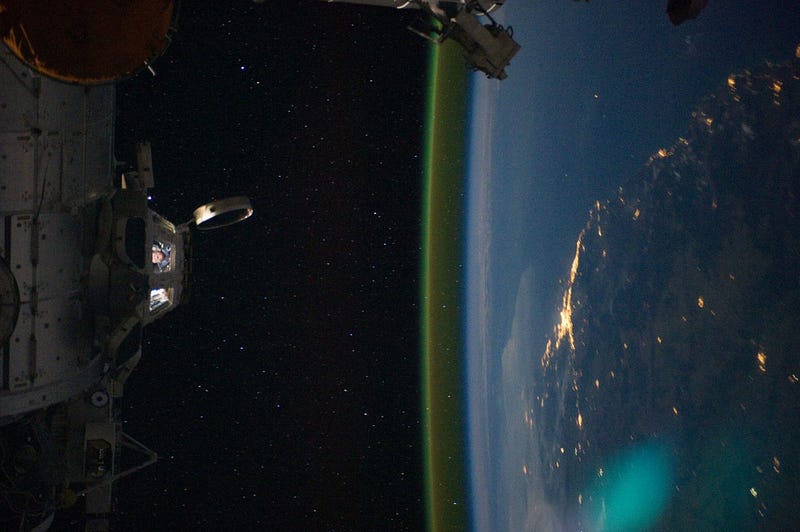
In February of 2010, the cupola was delivered and installed, giving astronauts a new view of the Earth. It also gave them the opportunity to experiment with photography.
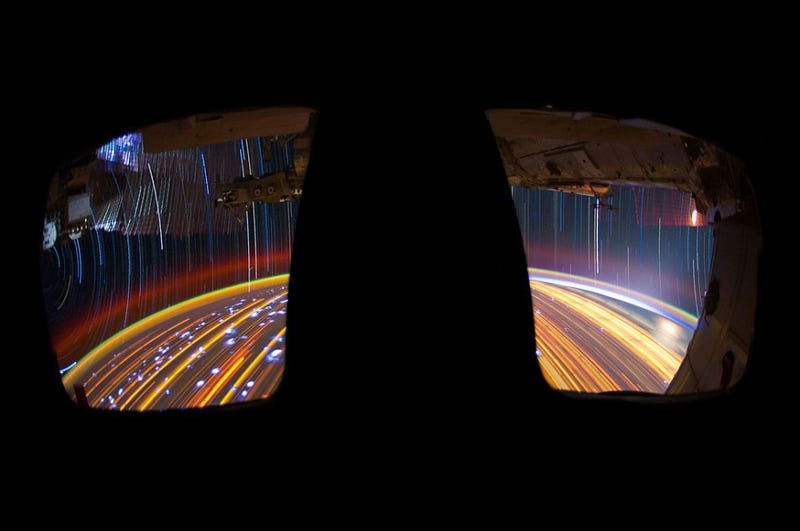
The first astronaut to take true advantage of this was Don Pettit, who stacked short-exposure photos together to produce the stunning effects of star trails.
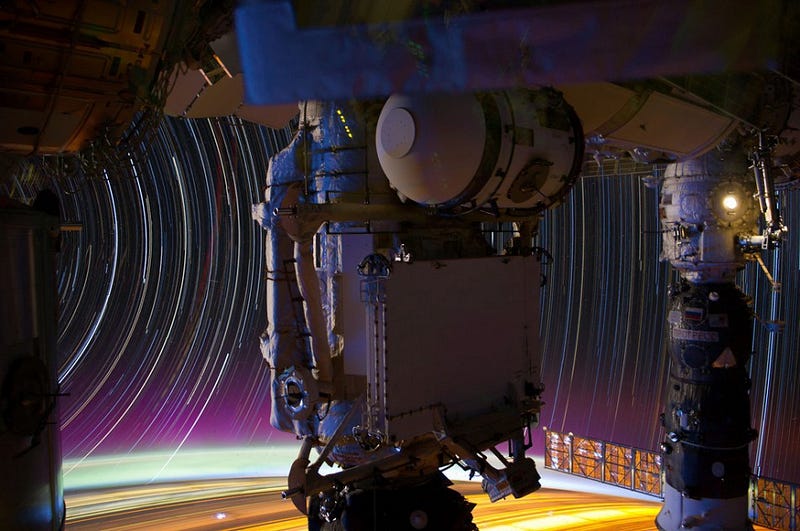
My star trail images are made by taking a time exposure of about 10 to 15 minutes. […] 30 seconds is about the longest exposure possible, due to electronic detector noise effectively snowing out the image.
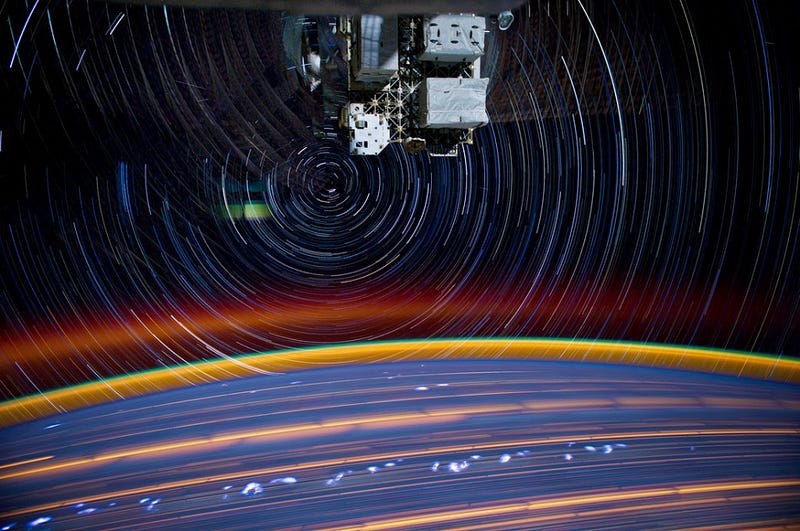
I take multiple 30-second exposures [an amateur astronomer technique], then ‘stack’ them using imaging software, thus producing the longer exposure.
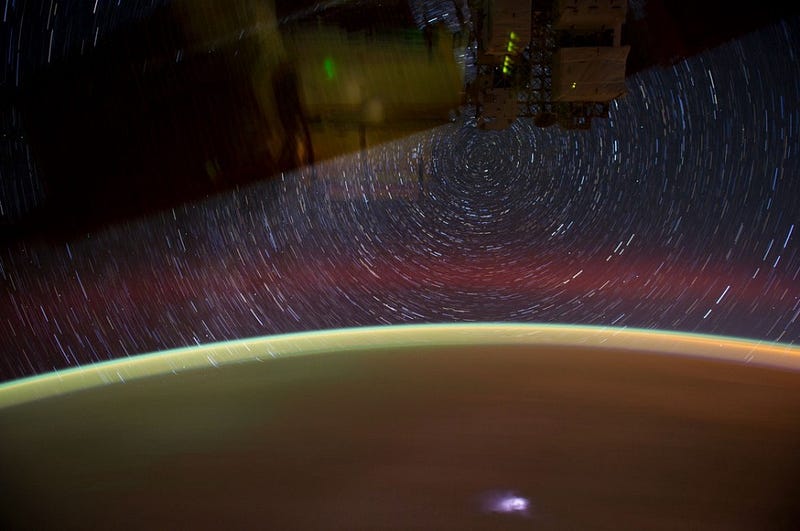
The stationary points are neither the north nor south poles, but rather arbitrary points about the ISS’s axis of rotation.
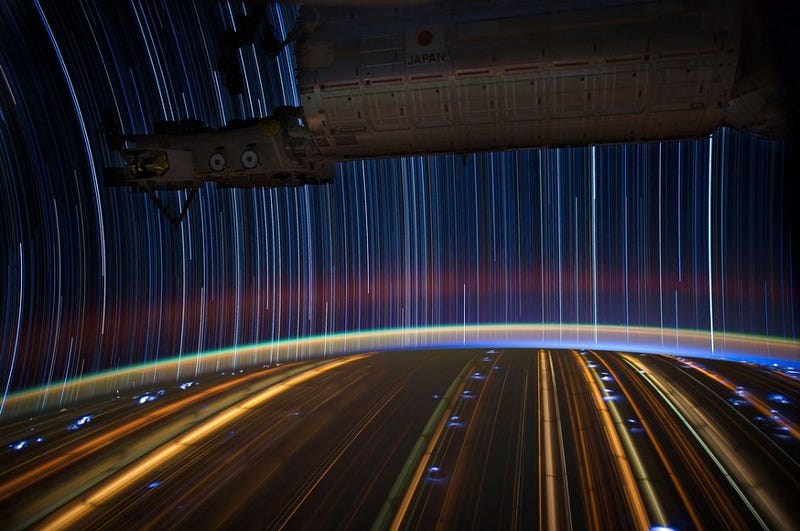
The green and red airglows, yellow city lights and even lightning (in blue) are all visible from this unique vantage point.
https://www.youtube.com/watch?v=TOQrx-7qgak
Mostly Mute Monday tells the story of a single astronomical phenomenon or object in pictures and other visuals, with no more than 200 words of text.
This post first appeared at Forbes. Leave your comments on our forum, check out our first book: Beyond The Galaxy, and support our Patreon campaign!
